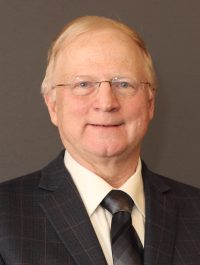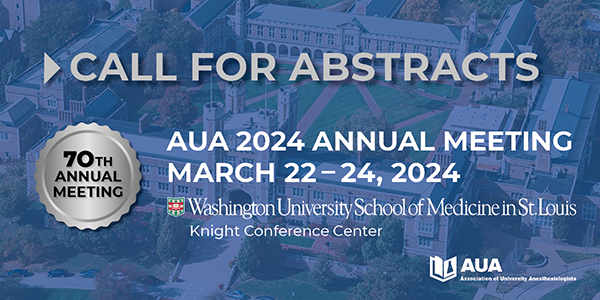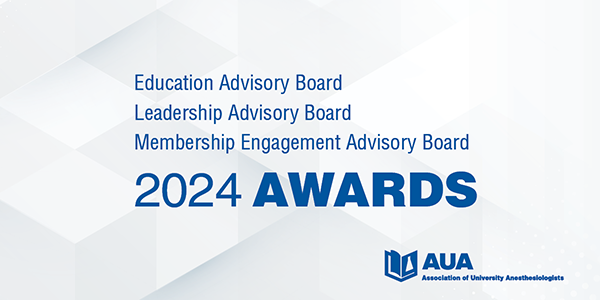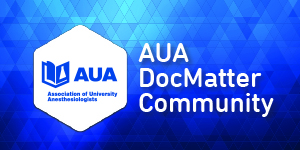New Accreditation Process for Neuroanesthesiology Fellowships
Neuroanesthesia fellowships were a topic of great interest in the early years of the Society of Neuroscience in Anesthesiology and Critical Care (SNACC)1,2. The discussion and debate about fellowships has ensued over the almost 50-year life of SNACC. Maurice Albin, a SNACC founder, wrote a seminal article on the need for neuroanesthesia fellowships in the fall 2008 SNACC newsletter which brought to attention many of the questions within the history of accreditation.3
Here are some notable quotes over the years from SNACC leaders relating to the fellowship:
Art Lam, 20033: “Neuroanesthesia is a subspecialty that has come of age; it has wide recognition and exists as a division in virtually all academic centers, many with fellowship training programs. Neurosurgeons have come to expect neuroanesthesiologists for the provision of special care and expertise for patients with major neurologic disease, and many centers have developed local protocols based on scientific and physiologic principles.
Maurice Albin 20033: “My paper for the 2003 SNACC meeting emphasized the remarkable changes that have transformed our neuroanesthesia practices since my own personal full-time involvement in 1962 and since the 1973 organization of the predecessor to SNACC - the Society of Neurosurgical Anesthesiology (SNA). This progress has been manifested by our enhanced knowledge of the dynamics of brain and spinal cord physiopathology and its interaction with the anesthetic state; by the formation of Neuroanesthesia Fellowship Programs in many of our University Academic Centers; by developing standards of care for many neuroanesthesia procedures; by bringing neuroanesthesia considerations into the residency and medical school curriculum; by the formation of SNACC and its recognition as a spokesman for our subspecialty by the ASA; and by the existence of the dedicated Journal of Neurosurgical Anesthesiology with Cottrell and Hartung as Editors – making this publication a focal point for world neuroanesthesiology.
Maurice Albin 20083: Again, I have made a plea for strengthening our Fellowship Programs and have advocated that we aim for subspecialty certification.
Ramsis Ghaly, 20094, Among all the anesthesia subspecialties, neurosurgical anesthesiology enjoys the best diversity and development. The neuroscience field has been impacted not only in the neurosurgical and neurology fields but also by the neuroimaging, neuromonitoring, neurodevelopment and nanosurgery. The field is constantly changing and has a tremendous future. It is one of the rare fields that is in an infantile stage now and moving progressively.
Numerous articles have been published in the SNACC newsletter encouraging development of a formal fellowship curriculum. This debate resulted in peer-reviewed research indicating support for fellowships5 (figure 1) and development of curricular guidelines.6

Figure 1. A web-based survey was distributed and filled out by 339 US based SNACC members5. A majority of respondents endorsed the development of an accreditation process for neuroanesthesiology fellowships.
Concurrent with the above-noted US-based SNACC discussion our colleagues in Europe, Canada, and UK have been conducting parallel discussions7-10. Valero etal9 and Sewell10 surveyed European and Canadian programs respectively finding a lack of uniformity in training standards and in Europe Valero noted general support to develop a neuroanesthesia fellowship accreditation system. Notably, Nathanson7 points out that European neuroanesthesia and neurocritical care is undergoing significant changes. Colleagues in a number of countries are working together through a number of organizations, including the ESA, EuroNeuro, and the European Neuroanesthesthesia and critical care interst group (ENIG) to improve education, training, research, and guideline production. Nathanson’s essay underscores the importance and growth, internationally, of perioperative neuroscience oriented professional societies, which are supporting the growth of efforts like those of ICPNT. (figure 2).
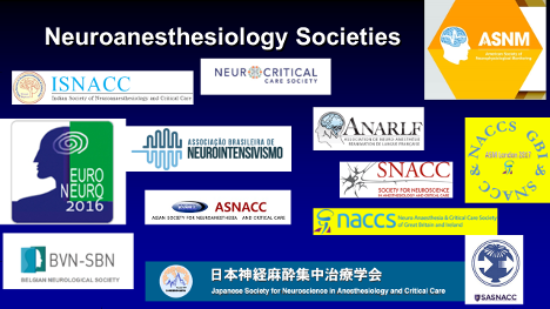
Figure 2. Some examples of international perioperative neuroscience professional societies supporting the notion of an international network of ICPNT-accredited neuroanesthesia fellowship programs.
This debate arose in the context of the United Council of Neurologic Subspecialties (UCNS) developing a non-ACGME (Accreditation Council for Graduate Medical Education) non-ABMS (American Board of Medical Specialties) structure to develop neurocritical care fellowship accreditation and trainee certification. At that time neurocritical care was deemed too small and uncertain to support a full ACGME accreditation and ABMS certification process, tasks which UCNS was designed to undertake to eventually lead to an ABMS recognized subspecialty. Thus, SNACC approached UCNS to support development of a similarly uncertain neurologic subspecialty, neuroanesthesiology. In initial meetings between SNACC and UCNS leadership this was welcomed as a good idea, focused on accreditation with certification to follow if sufficient interest was demonstrated. Thus, SNACC developed an application for membership in the UCNS which was submitted July 1, 2015. Unfortunately, the UCNS Board of Directors changed and those who reviewed the application declined the application, citing the main issue being that a neurologist could not participate in the neuroanesthesiology fellowship…
There also arose a very important concern. All of the already established accreditation bodies considered had a USA-based system; however, SNACC has always intended to be an international scientific society. There are also very prominent non-USA based neuroanesthesia fellowship programs with years of experience and significant research productivity, and not including them in the SNACC vision in establishing the accreditation system was not in line with SNACC goals. These fellowship programs, their directors and faculty are an important resource for networking and enriching the science of perioperative neuroscience for all trainers and trainees.
Undeterred by the UCNS events and in consideration of its international scope, SNACC then considered several options:
- Do nothing more and allow the status quo to continue. This was deemed not an acceptable choice given the aforementioned support for developing formal neuroanesthesiology fellowships.
- Following paths of other anesthesia subspecialties, seek ACGME as a mechanism of accreditation without certification. Concerns with this included the need to have fellowships be funded by Medicare funds which would entail a hospital choosing not to fund another fellowship position. Moreover, there was concern about an oppressive bureaucracy, inability to support junior faculty trainees, and geographic limitation to the United States.
- Seek inclusion in the Neurosurgery Committee on Advanced Subspecialty Training (CAST) system. This is a program which provides for accreditation of neurosurgical subspecialties and consideration was given to petition for inclusion in this system. This was rejected as being out of anesthesiology and risking the frame for the outcome similar to that which occurred with UCNS.
- Petition the International Anesthesia Research Society (IARS) to oversee an international neuroanesthesiology fellowship accreditation system. This was presented as an idea to IARS but was declined.
- Develop a SNACC based international neuroanesthesiology fellowship accreditation service. This has been adopted. Details are at ICPNT.NET

International Council for Perioperative Neuroscience Training (ICPNT)
The novel ICPNT blueprint described a council for establishing international standards of post specialty training in the field of perioperative neuroscience that would reside administratively in SNACC. The SNACC Executive Council amended the SNACC bylaws to allow such council to function, although more changes on governance and other issues are needed. A writing committee* was created which was tasked with creating the foundational documents for this organization, subsequently named the International Council for Perioperative Neuroscience Training (ICPNT). This name indicates that the scope of the program is international and includes all perioperative neuroscience not limiting it to neuroanesthesiology; allowing for possible future fellowship support for neuromonitoring, neurocritical care, or other related disciplines. The writing committee, with administrative assistance of Ruggles Service Corporation, has created a web page, a charter for ICPNT and the program requirements for accreditation. Notably these requirements are written in a way to facilitate international differences in regional training culture and regulations, while describing a required minimum of curriculum and clinical experience to comprise an accredited neuroanesthesiology fellowship. Moreover, the program requirements allow for different methods of funding and can be from institutional training funds or requiring fellows function as part time billing faculty. In addition, the concept of an enfolded fellowship during residency is also supported. And finally, the ICPNT has developed an accreditation application and process for evaluation of programs.
Seven programs were invited to be pilot programs and have been granted accreditation:
Pilot Neuroanesthesiology Fellowships Accredited by ICPNT (as of December, 2019)
Northwestern: Chicago, Illinois, USA
University of Washington: Seattle, Washington, USA
University College of London: London, UK
Cleveland Clinic Foundation: Cleveland, Ohio, USA
Columbia University Medical Center: New York City, USA
Odense University Hospital: Odense, Denmark
Vanderbilt University: Nashville, Tennessee, USA
Nine additional invited pilot programs have applications in preparation to be reviewed in April of 2020. These programs encompass the United States, Canada, United Kingdom, Europe, China, India, and South America. These pilot programs are providing feedback to enable ICPNT to open the accreditation service more broadly in April of 2020.
Notably we are introducing a novel approach to accreditation. Each application has two stages; the first is a formative submission by which reviewers provide feedback, then followed by a summative evaluation by which final accreditation is provided. Notably, every accreditation application is associated with constructive feedback to enable improvement of the applying program. (figure 3).
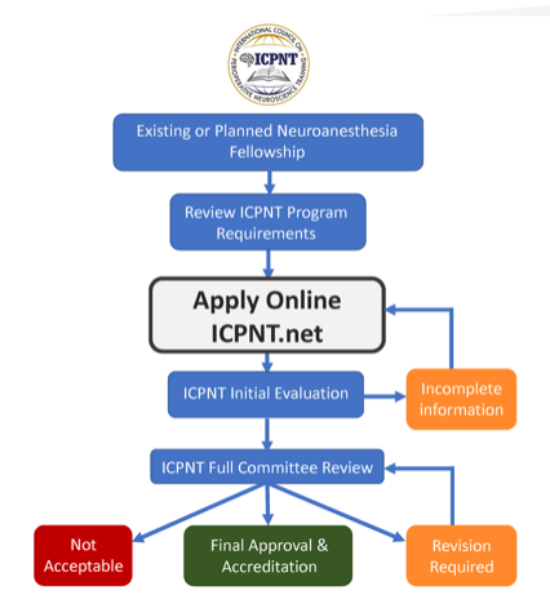
Figure 3. The application process for an ICPNT accreditation application. Note the two-stage process of formative followed by summative evaluation. The not acceptable category includes constructive advice to subsequently resubmit an application which will be acceptable.
ICPNT will also be differentiated from other accreditation systems in that we will promote and support the development of an international network of Neuroanesthesiology fellowship programs (figure 4). This will enhance education and possibly provide a research network. The network may allow for program strengths to be promulgated and allow programs with areas of weakness to tap into the network to help. We anticipate annual overviews of neuroanesthesia, international webinars, simulation sessions, visiting rotations, and so on.

Figure 4a. Traditional relationship of accreditation agents to programs. Programs do not work with each other. This approach is rejected by ICPNT.
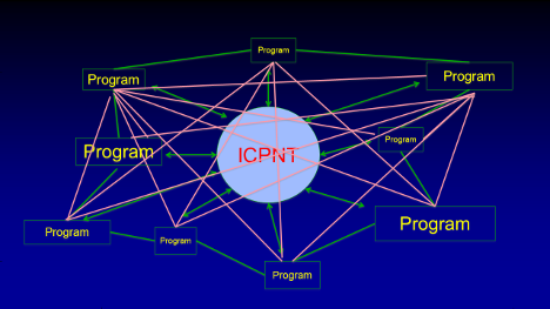
Figure 4b. ICPNT will communicate with programs but also support development of an inter-fellowship program network to facilitate quality improvement, education, and research.
More information, including an FAQ list, is available at the new ICPNT website, www.icpnt.net as well as the ICPNT twitter feed @icpnt. We welcome any advice from AUA members or any in the international academic anesthesiology community.
References
- Albin MS. Celebrating silver: the genesis of a neuroanesthesiology society. NAS-->SNANSC-->SNACC. Neuroanesthesia Society. Society of Neurosurgical Anesthesia and Neurological Supportive Care. Society of Neurosurgical Anesthesia and Critical Care. Journal of Neurosurgical Anesthesiology. 1997;9(4):296-307.
- Kofke WA. Celebrating ruby: 40 years of NAS→SNANSC→SNACC→SNACC. Journal of Neurosurgical Anesthesiology. 2012;24(4):260-80.
- Albin MS. Mission (not yet) Accomplished! SNACC Newsletter. 2008:1-3.
- Ghaly RF. The Future of Neuroanesthesiology: Member Calls for a 2-Year Comprehensive Structure: SNACC; 2010 [Available from: https://www2.snacc.org/newsletters/10-spring.pdf.
- Mashour GA, Lauer K, Greenfield MLVH, Vavilala M, Avitsian R, Kofke A, et al. Accreditation and standardization of neuroanesthesia fellowship programs: Results of a specialty-wide survey. Journal of Neurosurgical Anesthesiology. 2010;22(3):252-5.
- Mashour GA, Avitsian R, Lauer KK, Soriano SG, Sharma D, Koht A, et al. Neuroanesthesiology fellowship training: Curricular guidelines from the society for neuroscience in anesthesiology and critical care. Journal of Neurosurgical Anesthesiology. 2013;25(1):1-7.
- Nathanson M. Working together to improve patient care: Guidelines for neuroanaesthesia. Rev Esp Anestesiol Reanim. 2012;59:1-2.
- Fàbregas N, Salvador L, Valero R, Carrero E, Gomar C, Nalda M. [Analysis of the current status of neuroanesthesia in Spain using a national survey]. Rev Esp Anestesiol Reanim. 1998;45:166-71.
- Valero R, Nathanson MH, Willner D, Fàbregas N, Bilotta F, for the Neuroscience Subcommittee of the European Society of Anaesthesiology tEN, et al. Developing standardised advanced training in neuroanaesthesia: Results of a Europe-wide survey. European Journal of Anaesthesiology (EJA). 2017;34(2):51-3.
- Sewell D, Henderson C, Tremblay MH, Pellerin H, Flexman AM. Survey of neuroanesthesia fellowships in Canada. Canadian Journal of Anesthesia. 2017;64(3):323-4.
* The content of this essay is derived from work of the ICPNT council and writing committee which has been involved in composition of the founding ICPNT documents. In addition, many of the figures included were presented by Rafi Avitsian at the 2018 EuroNeuro meeting (“Introducing a New Accreditation Process for Neuroanesthesiology Fellowship: ICPNT”). The full slide set from the talk is available on request.
The ICPNT writing committee:
W Andrew Kofke, Chair, Lara Ferrario, Secretary-Treasurer, Rafi Avitsian , John Patrick Bebawy, Maria Bustillo, Alana Flexman , Leslie Jameson, Phuping A Kavipat , Chanhung Lee , Nan Lin, Coleen Moran, Mike Nathanson, Chanannait Paisansathan, Jeffrey Pasternak, Shobana Rajan , Shilpa Rao, Steven Robischek , Deepak Sharma, Ricard Valero, Stewart Hinckley (Ruggles Advisor)
